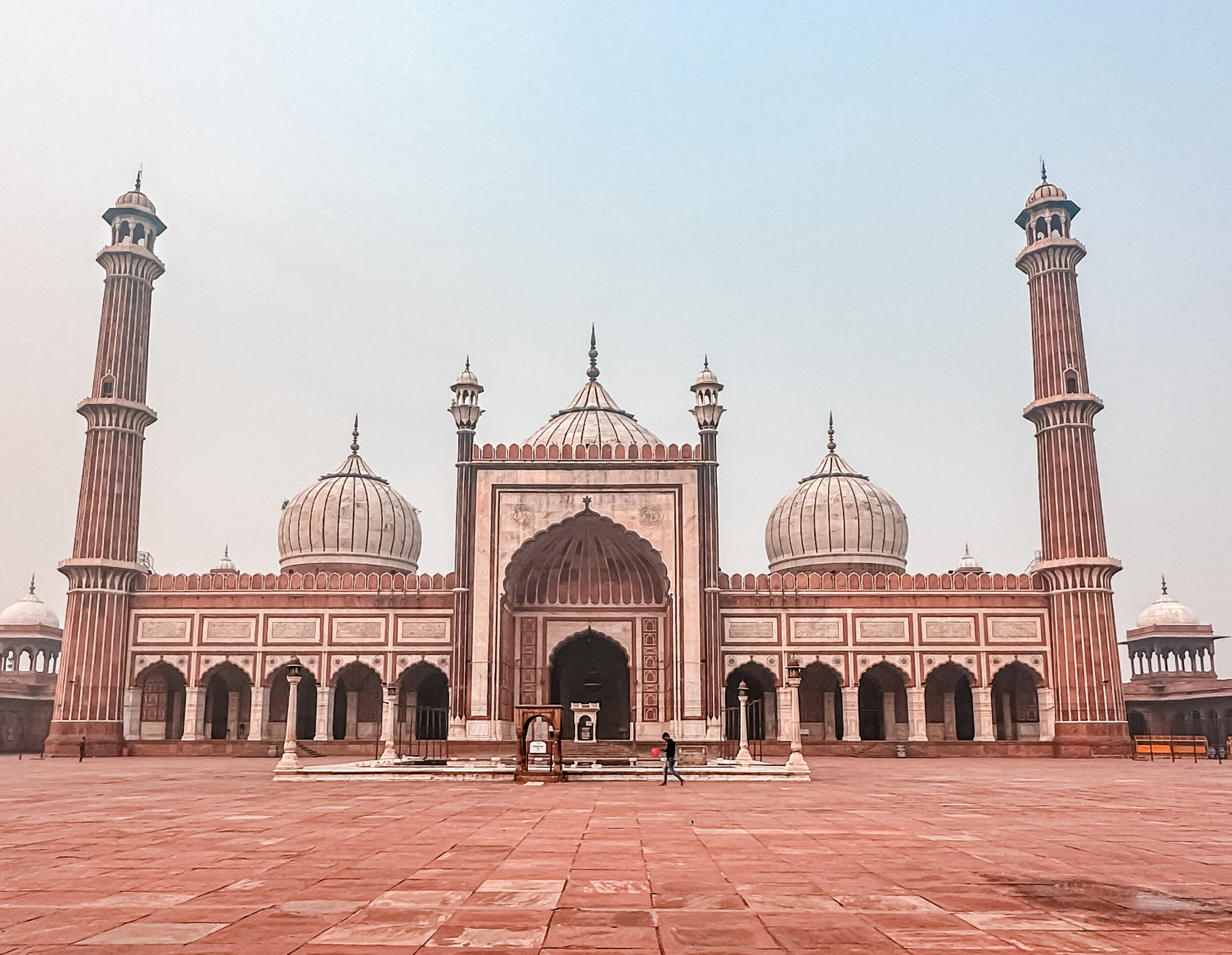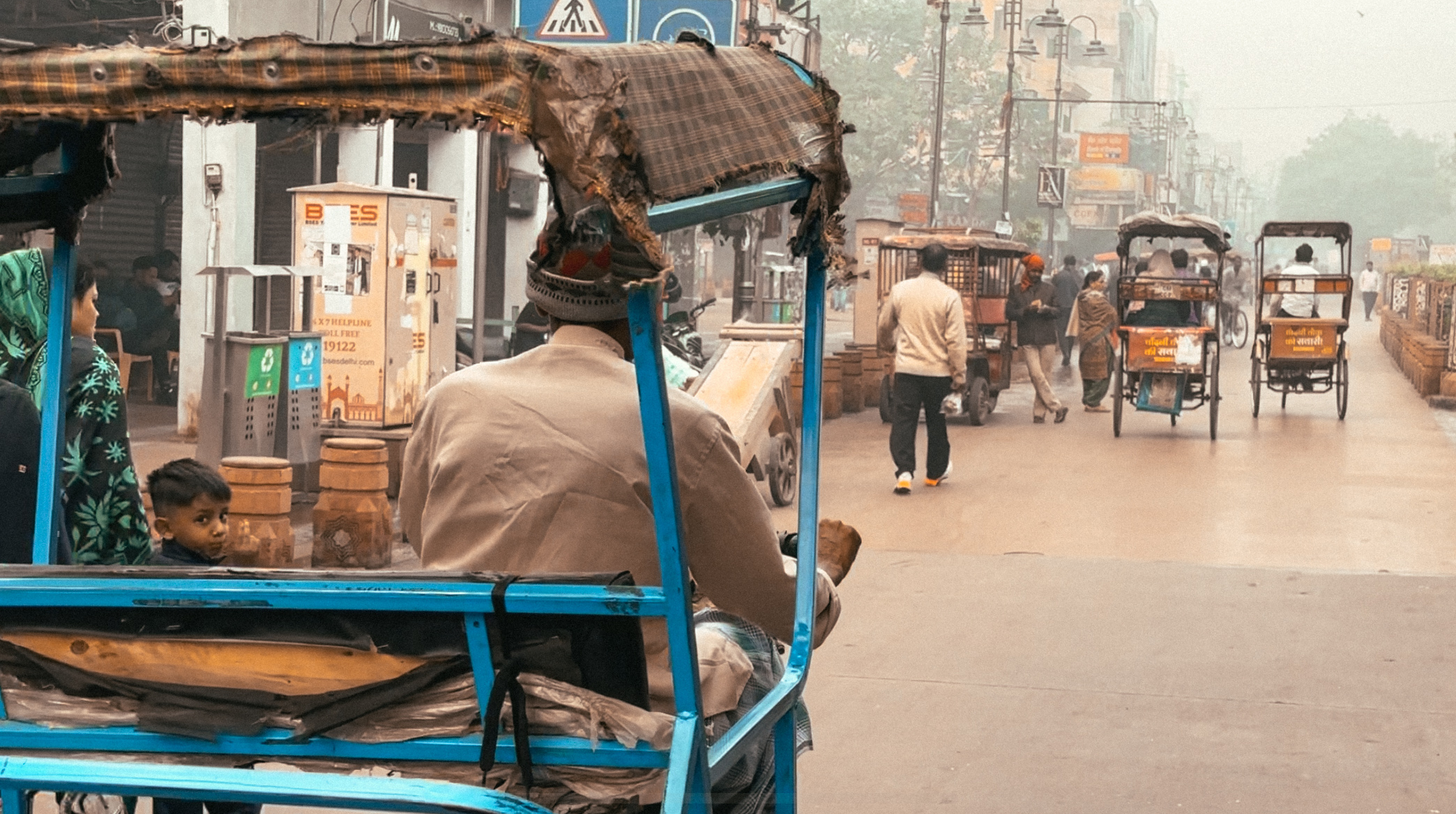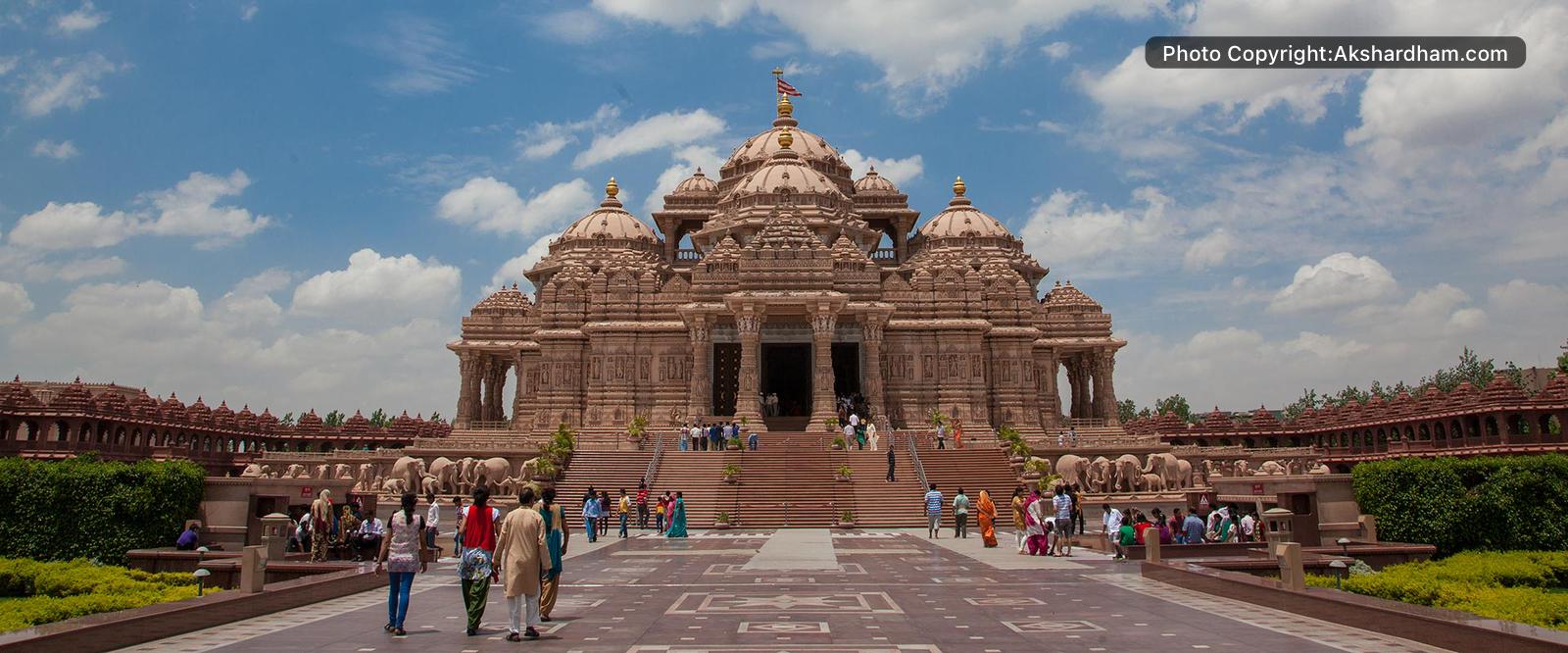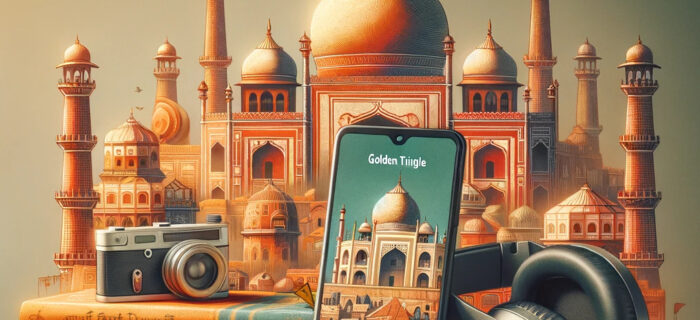A Delhi Day Tour: from dawn ’til dusk
Ah, the bustling heart of India…is it possible to see everythink in a Delhi day tour? In an admirable (or perhaps insane) display of enthusiasm, we decided to embark on this mission, before heading to Jaipur. Our journey began on a gloomy yet warm morning of early December, as the sun hid behind a thick blanket of clouds. The best time to visit Delhi is during the winter, from December to early March. After that, Delhi becomes very hot, and it experiences the summer monsoon from June to September.
DELHI DAY TOUR: LET’S START!
To ensure we could make the most of our time in the city we opted for a driver and defined the itinerary and the spot we wanted to cover. As usual I go for Get Your Guide and also this time I was not disappointed. Here’s the tour we bought, 8 hours with driver and guide.
We landed at 6am in the morning and by 7am we were at our Hotel Taj Mahal Delhi. After a sumptuous breakfast, we fought the jet lag and got ready to go.

The biggest Mosque
Our adventure began with the awe-inspiring Jama Masjid, Delhi's largest mosque. As we entered its sprawling courtyard, the magnitude of this architectural marvel struck us. The mosque can accommodate an astounding 25,000 worshippers, a testament to the grandeur of the Mughal era.
What impressed me was the pavement design, adorned with the shape of the prayer mat. This thoughtful feature ensures that everyone knows exactly where to sit for their prayers, adding to the mosque's sense of unity and purpose. Living in Dubai, and having travelled around several Arab places, I've visited a lot of Mosques but never seen such a thing!
Built by the Mughal Emperor Shah Jahan in 1656, the Jama Masjid stands as one of his last architectural legacies. Its construction took six years, and its grandeur reflects the opulence of the Mughal Empire.

Chandni Chowk Market in Tuk Tuk
Next stop the labyrinthine alleyways of Old Delhi Market.
Admittedly, we may have been a bit too early for the full market experience. As the tuk-tuk weaved through the bustling streets the stalls were still yawning and stretching, much like we were. If you're after the full-on market madness, come back later in the day when the streets are alive with the hustle and bustle of commerce. The market, also known as Chandni Chowk, was originally designed by the daughter of Emperor Shah Jahan. It's older than some modern-day cities!
The tuk tuk ride was included in the cost of our tour but you are expected to tip the drivers after the ride. If you have more time to spend in Delhi, you can also decide to come back later, stroll around at your own pace and enjoy some of Delhi best street food. If you want some tips go read the "15 Best street Food in Chandni Chowk" by Hermann Singh, Delhi Food Blogger.

Finding inner peace
Raj Ghat, Mahatma Gandhi's memorial, stands in stark contrast to the market's chaos. It invites reflection and pays homage to the father of the nation, who advocated non-violence and civil disobedience. Here, the atmosphere whispers, "Initiate change within." Gandhi's memorial, an open-air black marble platform, marks his cremation site after his 1948 assassination. An Eternal Flame symbolizes the enduring impact of his principles and ideals.

The inspiration for Taj Mahal
Our Delhi Day Tour then led us to Humayun's Tomb, a UNESCO World Heritage Site. It's the final resting place of Emperor Humayun and served as a blueprint for the Taj Mahal. So, if you can't make it to Agra, consider this a pre-Taj teaser 😉 This is the final resting place of Emperor Humayun, although it wasn't completed until nearly 15 years after the emperor's death.
Built in the 16th century, Humayun's Tomb was the first garden tomb in the Indian subcontinent and set the stage for the Mughal architectural style. Its relationship with the Taj Mahal is evident in the use of similar design elements and the love of symmetry.
The entrance to Humayun's Tomb is through the grand western gate, leading to a garden designed to replicate the Quran's description of paradise. This char bagh (four quadrants) layout represents the four rivers of paradise.
Each quadrant of greenery and flowing water contributes to the tomb's serene and harmonious atmosphere.
THE ARCHITECTURE
The mausoleum's architecture is a blend of Persian and local Indian influences, showcasing small domes adorned with blue and yellow tiles. Traditional artisans from Uzbekistan played a role in teaching local Indian youth the art of tile-making during the restoration process.
Among the structures within the garden is the Barber's Tomb, a post-mausoleum addition dedicated to the royal barber who once served Emperor Humayun.I guess the Emperor had a controversial relationship with his hair, which I totally understand!!
If you want to deep dive watch the episode of "Grand Structures" below: it explores the majestic tale of Humayun's Tomb, its grand design, layout, and architectural significance.

A tech-free experience
What's truly fascinating is the temple's commitment to a no-electronics policy. This means no mobile phones, cameras, vapes, or cigarettes. Initially, this might feel like a step back into a disconnected world, but it serves a deeper purpose. It encourages visitors to immerse themselves in the tranquility and beauty of the place without distractions.
As I approached the security check, a guard gently reminded me of the no-tech policy. There I was, trotting back to the cloakroom to deposit my forgotten AirPods (facepalm)
Swaminarayan Akshardham complex, is a spectacle of ancient architecture, spirituality, and Indian culture. This Hindu temple is not just a place of worship; it's a journey through India's glorious heritage. Built in 2005 by Pramukh Swami Maharaj, the temple complex features a striking blend of Rajasthani, Oriya, Gujarati, Mughal, and Jain architectural styles.
In 5 years, over 300 million man-hours of 11,000 artisans culminated in the breathtaking structure you see today. Every inch of the temple is adorned with super intricate carvings – a testament to the unparalleled skill and dedication of its creators. From the majestic elephants at its base, symbolizing strength and peace, to the flora, fauna, dancers, musicians, and deities around the complex.
The centerpiece, the Mandir, is built from Rajasthani pink sandstone and Italian Carrara marble. It's a no-steel, no-concrete structure, relying entirely on ancient architectural principles and techniques. The Mandir features 234 ornately carved pillars, nine domes, and more than 20,000 statues, each meticulously crafted.
Did you know that The Angkor Wat Temple in Cambodia, dating back to the 12th century, stands as the world's largest Hindu temple?
NO MOBILE PHONE, NO MEMORIES?
No worries, if you still want your photo inside the temple, there's a professional photographer in a pre set location. Strike your three poses, brave the flash, and get that slightly photoshopped-looking photo. It's all part of the adventure and a story to tell, adding a quirky chapter (and a few rupees less) to your travelogue. Take it or leave it, indeed – but why not take it and smile?

Calling all Archilovers
Our last stop of the Delhi Day Tour was the Lotus Temple. Shaped like a blooming lotus flower, it's a haven for meditation and reflection. Unfortunately, we didn't unlock any hidden chakras, as we were too tired and sleepy with no energy left, but the stunning architecture was worth the visit.
The Lotus Temple is a Bahá'í House of Worship, one of only seven in the world. Its unique design, by Fariborz Sahba, an Iranian-American architect, has won numerous architectural awards, and costed 10 million $. The marble used for the temple comes from Mount Penteli in Greece.
Upon reaching the base of the temple, a simple yet significant ritual marks your transition: the removal of your shoes. You should be used to it by now, after visiting the other temples!
Visiting the Lotus Temple, especially during peak times, can indeed be a test of patience. The temple's popularity and its significance as a place of peace and meditation mean that it often attracts large crowds. When it's busy, you might find yourself waiting in line for an hour or more to enter the Prayer Hall.
And with that, our whirlwind Delhi day tour, from serene contemplation to architectural wonder, came to an end.
However, as all travelers know, sometimes the body demands rest, especially after a long, sleepless night flight. We had to skip some of Delhi’s iconic landmarks – the majestic Red Fort and the awe-inspiring Qutub Minar.
The Red Fort, known for its impressive red sandstone architecture, stands as a symbol of India’s eventful history, dating back to the Mughal era. Not too far away, the Qutub Minar, the world’s tallest brick minaret, is an architectural masterpiece and a UNESCO World Heritage Site. Even though we couldn’t visit these landmarks, they remain an integral part of Delhi’s identity so I strongly suggest you to fit those two spots in your itinerary.
Delhi is a bustling metropolis, where the chaotic rhythm of modern urban life seamlessly intertwines with the vibrant hues of ancient history
The Pins in the Google map below show the spots we visited. Now your Delhi Day Tour is completed 😉


You May Also Like

South Korea Essentials: Apps, Films & K-Pop Gems
March 23, 2024
India’s Golden Triangle essentials
January 20, 2024
